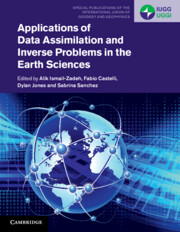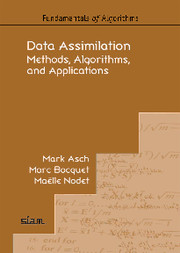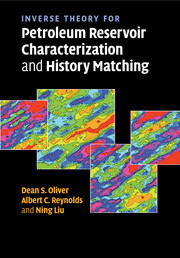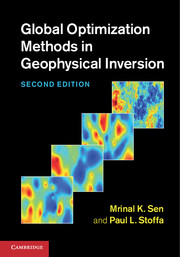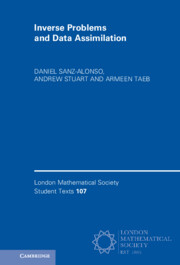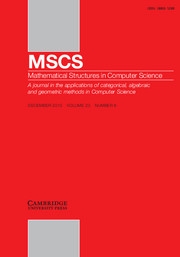Applications of Data Assimilation and Inverse Problems in the Earth Sciences
Many contemporary problems within the Earth sciences are complex, and require an interdisciplinary approach. This book provides a comprehensive reference on data assimilation and inverse problems, as well as their applications across a broad range of geophysical disciplines. With contributions from world leading researchers, it covers basic knowledge about geophysical inversions and data assimilation and discusses a range of important research issues and applications in atmospheric and cryospheric sciences, hydrology, geochronology, geodesy, geodynamics, geomagnetism, gravity, near-Earth electron radiation, seismology, and volcanology. Highlighting the importance of research in data assimilation for understanding dynamical processes of the Earth and its space environment and for predictability, it summarizes relevant new advances in data assimilation and inverse problems related to different geophysical fields. Covering both theory and practical applications, it is an ideal reference for researchers and graduate students within the geosciences who are interested in inverse problems, data assimilation, predictability, and numerical methods.
- Introduces the theory of geophysical inversions and data assimilation using ordinary-language and examples throughout, making the theory accessible to readers from different geoscientific disiplines
- Highlights state-of-the-art applications in data assimilation and geophysical inversions in Earth science disiplines including atmospheric and cryospheric sciences, hydrology, geochronology, geodesy, geodynamics, geomagnetism, gravity, near-Earth electron radiation, seismology, and volcanology
- Provides examples of how multi- and inter-disciplinary approaches can help to unravel complex phenomena
Product details
June 2023Adobe eBook Reader
9781009190077
0 pages
This ISBN is for an eBook version which is distributed on our behalf by a third party.
Table of Contents
- Part I. Introduction:
- 1. Inverse Problems and Data Assimilation in Earth Sciences Alik Ismail-Zadeh, Fabio Castelli, Dylan Jones and Sabrina Sanchez
- 2. Emerging Directions in Geophysical Inversion Andrew P. Valentine and Malcolm Sambridge
- 3. A Tutorial on Bayesian Data Assimilation Colin Grudzien and Marc Bocquet
- 4. Third-Order Sensitivity Analysis, Uncertainty Quantification, Data Assimilation, Forward and Inverse Predictive Modelling for Large-Scale Systems Dan Cacuci
- Part II. 'Fluid' Earth Applications from the Surface to the Space:
- 5. Data Assimilation of Seasonal Snow Manuela Girotto, Keith N. Musselman and Richard L. H. Essery
- 6. Data Assimilation in Glaciology Mathieu Morlighem and Daniel Goldberg
- 7. Data Assimilation in Hydrological Sciences Fabio Castelli
- 8. Data Assimilation and Inverse Modelling of Atmospheric Trace Constituents Dylan Jones
- 9. Data Assimilation of Volcanic Clouds: Recent Advances and Implications on Operational Forecasts Arnau Folch and Leonardo Mingari
- 10. Data Assimilation in the Near-Earth Electron Radiation Environment Yuri Y. Shprits, Angelica M. Castillo, Nikita Aseev, Sebastian Cervantes, Ingo Michaelis, Irina Zhelavskaya, Artem Smirnov and Dedong Wang
- Part III. 'Solid' Earth Applications from the Surface to the Core:
- 11. Trans-Dimensional Markov Chain Monte Carlo Methods Applied to Geochronology and Thermochronology Kerry Gallagher
- 12. Inverse Problems in Lava Dynamics Alik Ismail-Zadeh, Alexander Korotkii, Oleg Melnik, Ilya Starodubtsev, Yulia Starodubtseva, Igor Tsepelev and Natalya Zeinalova
- 13. Data Assimilation for Real-Time Shake-Mapping and Prediction of Ground Shaking in Earthquake Early Warning Mitsuyuki Hoshiba
- 14. Global Seismic Tomography Using Time Domain Waveform Inversion Barbara Romanowicz
- 15. Solving Larger Seismic Inverse Problems with Smarter Methods Lars Gebraad, Dirk-Philip van Herwaarden, Solvi Thrastarson and Andreas Fichtner
- 16. Using Joint Inversion as a Hypothesis Testing Tool Max Moorkamp
- 17. Crustal Structure and Moho Depth in the Tibetan Plateau from Inverse Modelling of Gravity Data Shuanggen Jin and S. B. Xuan
- 18. Geodetic Inversions and Applications in Geodynamics Grigory Steblov and Irina Vladimirova
- 19. Data Assimilation in Geodynamics: Methods and Applications Alik Ismail-Zadeh, Igor Tsepelev and Alexander Korotkii
- 20. Geodynamic Data Assimilation: Techniques and Observables to Construct and Constrain Time-Dependent Earth Models Hans-Peter Bunge, Andre Horbach, Lorenzo Colli, Siavash Ghelichkhan, Berta Vilacís and Jorge N. Hayek
- 21. Understanding and Predicting Geomagnetic Secular Variation via Data Assimilation Weijia Kuang, Kyle Gwirtz, Andrew Tangborn and Mathias Morzfeld
- 22. Point-wise and Spectral Observations in Geomagnetic Data Assimilation, the Importance of Localization Sabrina Sanchez
- Index.

